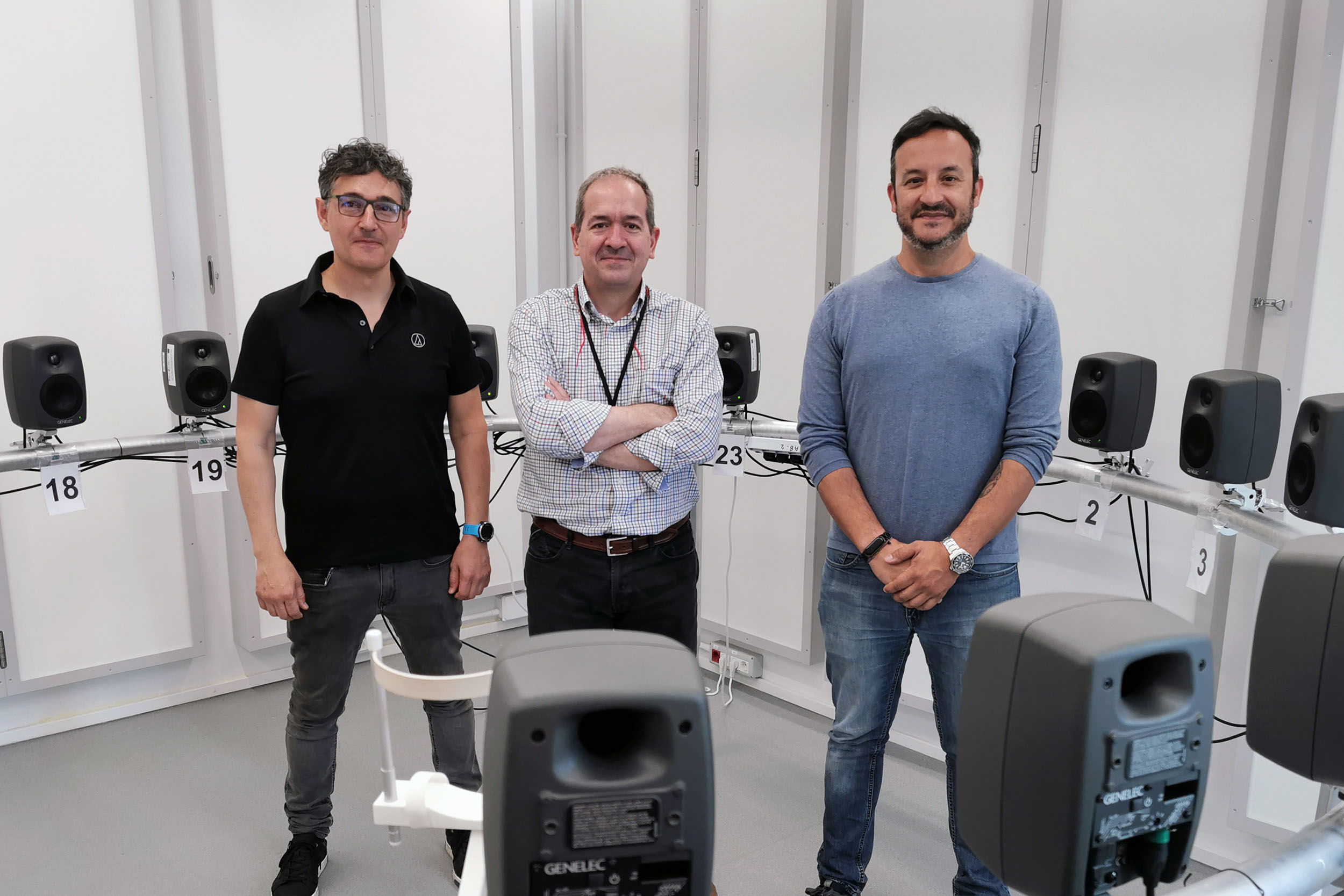Neuroscience Unit Relies on Genelec Monitors for New Research Facility

The Acoustic-Hearing Evaluation Unit (UNEVA) at the Universidad de Salamanca (USAL) is home to cutting-edge research into hearing aid and implant technology. Located in the Instituto de Neurociencias de Castilla y León, UNEVA is seen as a pioneering piece of infrastructure for hearing technology in the region. At the heart of the facility is a soundproofed room with variable reverberation that allows listening to be simulated in various sound environments thanks to its Genelec 8020 studio monitors.
The unit can be used for research based on perception experiments with both healthy people and those suffering from diseases, as well as research in the field of theoretical neuroscience and the development of computational models. It also assists with research into models to improve hearing implants, hearing aids and other hearing aid devices, as well as diagnostic methods for those with hearing issues. In addition, the unit is used to prove that new sound processing for hearing aids and new devices themselves are beneficial to users.
The computational models developed in this laboratory serve to simulate how the healthy auditory system works, and how the representation of sound in a listener’s brain would be altered when there is disease or injury. “In this way we can simulate how sounds are encoded in the healthy ear and how they stop being encoded when there is damage,” explains Professor Enrique López Poveda, director of UNEVA. “And since we have the models that simulate the behavior of the healthy ear, we can use them as a basis to build hearing aids or hearing implants. That is, you have an algorithm that reproduces the behavior of the healthy ear, and when the ear is altered, we use that algorithm to reproduce what is failing, and rebuild it.”
The central space for carrying out this research is the variable acoustics room. It has been observed that people who are hard of hearing and use hearing aids or cochlear implants have little trouble understanding speech when reverberation is not present, but in a reverberant space they have great difficulty. The other significant factor is how noisy the environment is. So, the room has been created to test these observations and see how technology can be used to overcome these challenges.
The room itself has been electrically shielded, soundproofed and equipped with panels that can be opened or closed to adjust reverberation and absorption, allowing tests in realistic environments. At the heart of this space is a 3 m diameter ring of twenty-four 8020 monitors, supplied by local Genelec distributor Audio-Technica Iberia, which allows the researchers to create and change the background noise levels in the space.
“A typical test is to reproduce a phrase, word or conversation in the presence of other phrases, words, or noise coming from other sources,” explains Professor López Poveda. “For example, a sentence is played through one monitor, and the listener would have to repeat it while other monitors are playing background noise and other speech sources. If they correctly repeat what they have heard, we raise the noise level. The more noise and the more phrases used, the more difficult it is to properly understand the main phrase.”
It was the exceptional reliability, neutral sound and ability to adapt its frequency response to the listening environment that led to the selection of the 8020 model for this project. The monitors form a fundamental element of the work undertaken at UNEVA, since the research requires an exceptional level of accuracy and consistency. The 8020 has become a benchmark for compact two-way nearfield monitoring, and its small footprint and curved enclosure design make it perfect for “stealth” behavior, producing less reflections and diffraction even when many monitors are installed in close proximity to each other.
The first stage of the project has seen the installation of the ring of 24 monitors, but there are plans to further develop the unit. “We have created a speaker ring, but we could add more,” states Professor López Poveda. “We could build a sphere, since the design of the ring also allows it to be turned around and hung from the ceiling, for which we have provided hooks in different positions – it’s very versatile.”





